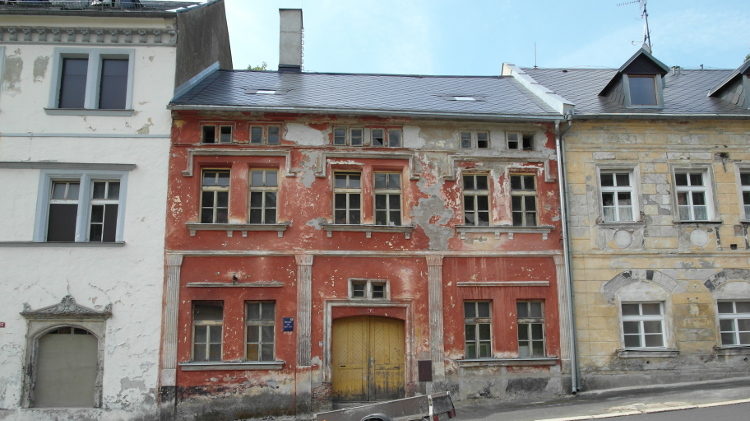The interior of the Black Donald mine shaft, located under Whitefish Lake. Both the mine and the lake were consumed by the larger Black Donald Lake in 1967. / Harry Hinchley. Library and Archives Canada, PA-094774
Before the 1867 construction of the road that led deep into the Black Donald Mountains, located about 120 kilometres west of Ottawa, the untamed region was considered wild by settler society. Eventually the growth of immigrant populations in the Ottawa area forced a westward expansion of Opeongo Road and soon Irish, Poles and Germans settled the region.
John Moore was one of the first European settlers of the mountainous frontier. He was offered a plot of land near Whitefish Lake. One day in 1889, while strolling on his property, he slipped on a rocky outcrop and made a life-changing discovery. A sampling of the brittle dark rock confirmed Moore had uncovered a graphite deposit.
Graphite was much needed in the industrialized 19th century. The mineral is heat-resistant, making it an ideal lubricant for motors and a good liner in crucibles containing molten steel. The demand for graphite, combined with the purity of the deposit on Moore’s property, made the discovery incredibly valuable. The nearest graphite deposit was five to six per cent pure, whereas Moore’s discovery was 65 to 84 per cent pure.
In 1895, a group of men who later formed the Ontario Graphite Company bought the land and the mineral and surface rights for $42,000. They sunk shafts under Whitefish Lake, following a massive vein. Although the deposit was rich, producing 100 tonnes of refined graphite and 200 tonnes of crude graphite in the first year alone, there was no mill on site. The modest operation required only 15 miners, and the ore was processed in Ottawa.
In 1902, the graphite industry experienced a significant development. Mills shifted from the “wet” method of processing ore, which required crushing, screening and washing to produce flakes, to the “dry” method, which crushed and dried the ore prior to putting it through millstone for processing. This development improved processing efficiency and made having a mill on site economically feasible. A mill was constructed at Whitefish Lake, and Black Donald became self-sufficient.
Related: The stampede for silver in Cobalt surpassed the Klondike Gold Rush and formed the basis for Ontario's mining industry
The mine faced significant obstacles before it could enjoy the success of the new mill. A shaft constructed too close to the lake bottom gave way in 1902, and resulted in significant flooding of the primary shaft. Despite efforts to pump out the water, the mine remained closed until 1906.
After the Black Donald Graphite Company leased the property in 1906, a new shaft was installed and the refinery was renovated. With the addition of an on-site refining process, far more workers were needed and a new village, known simply as Black Donald Mines, was born.
In the lead-up to the First World War the demand for industrial lubricants skyrocketed. Black Donald was considered to have the best products in the industry, and the mine was quickly pushed to capacity to keep up.
At the end of the war a fire broke out in the town, destroying the mill. Instead of folding, however, the company built a new, more efficient mill that used the “callow” method, which used flotation to separate materials.
The end of the war in 1918 meant less demand for graphite, and the labour force was cut in half. By 1938 the mine operated for only half the year with 15 employees, compared to 118 at its peak.
The 1940s brought a new mine owner, Frobisher Explorations Limited, and a new war, which led to the short-term revival of the mine and the town. But again, the end of the
Second World War caused demand for graphite to wane. As well, a number of setbacks challenged the miners at Black Donald. Two fires broke out – one in 1946 and the other in 1950 – destroying the hoist room, power house and the mill’s interior. Additional shafts collapsed as well until finally, on Nov. 22, 1950, the entire mine collapsed. Operations continued on a reduced scale, until every last pound of graphite was processed. On March 5, 1954, the company closed and the remaining 22 workers were sent home for the last time.
In 1967, Ontario Hydro constructed a large dam on the Madawaska River near the site of Black Donald. The waters of Whitefish Lake flooded 8,500 hectares and swallowed all traces of the once-bustling town and its namesake mine.




